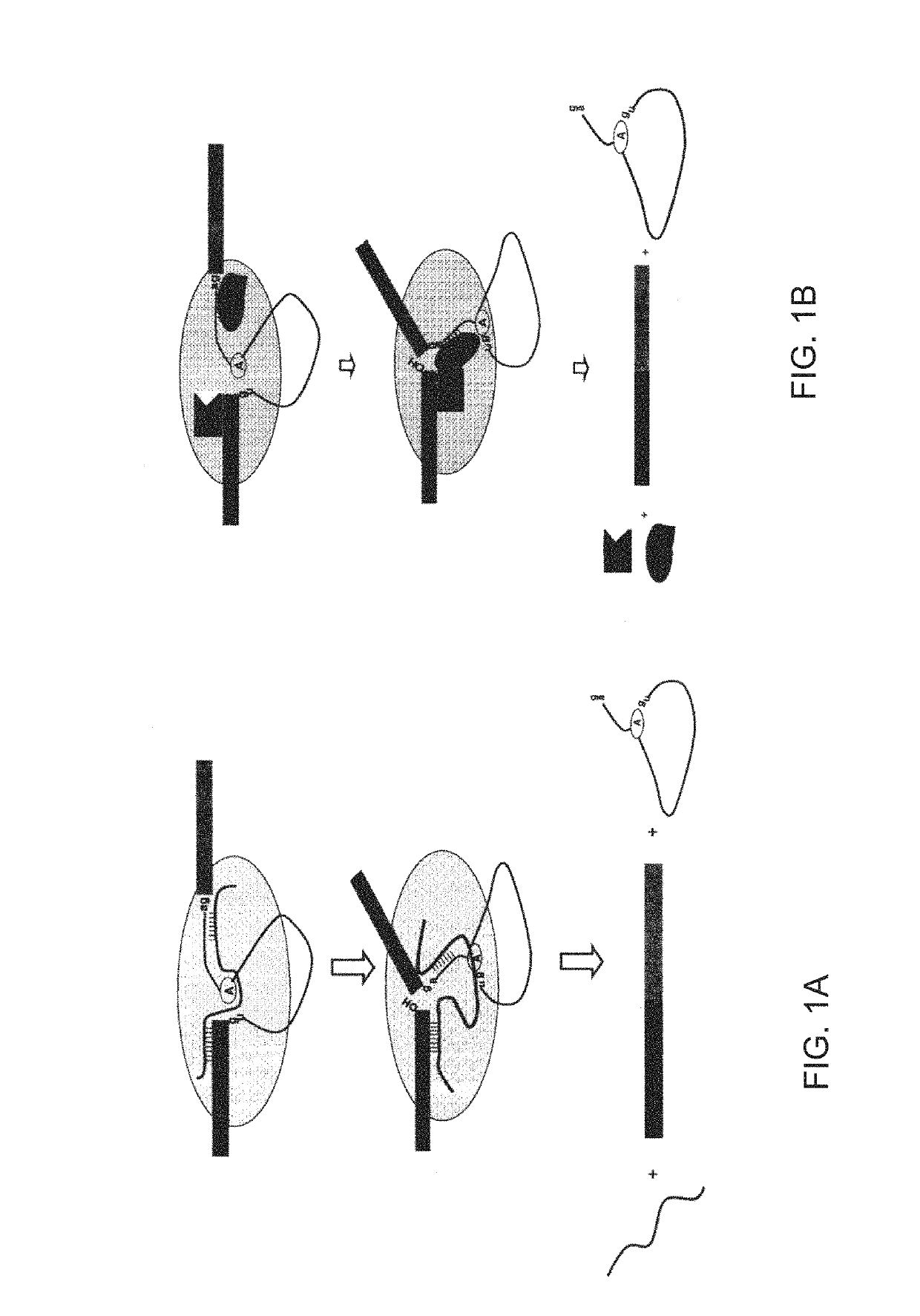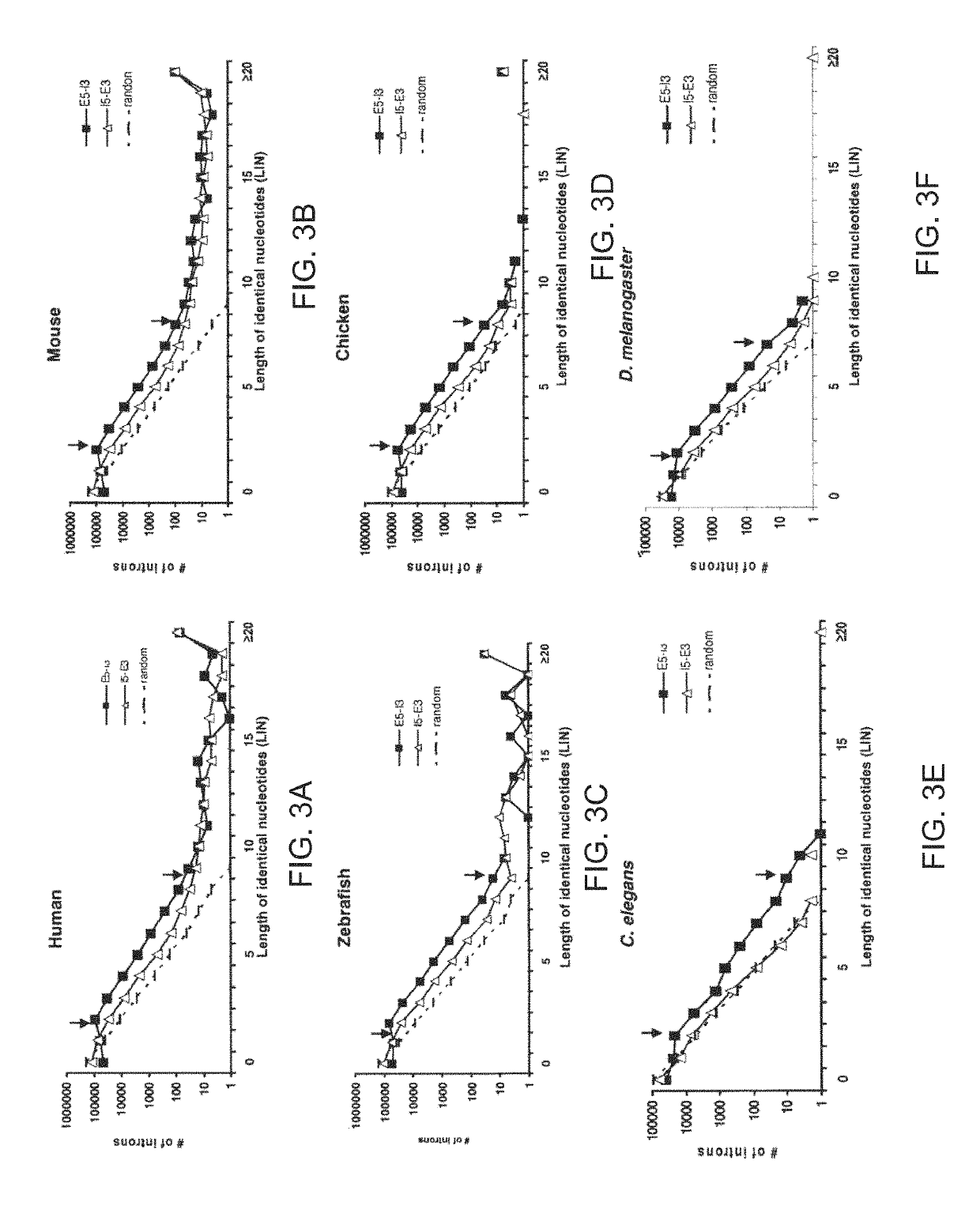System and method for analyzing splicing codes of spliceosomal introns
a spliceosomal intron and spliceosomal technology, applied in the field of system and method for analyzing spliceosomal intron splicing codes, can solve the problems of limited effectiveness of both approaches, many approaches have been developed, and only limited success of alternative splicing
- Summary
- Abstract
- Description
- Claims
- Application Information
AI Technical Summary
Benefits of technology
Problems solved by technology
Method used
Image
Examples
Embodiment Construction
[0285]The inventor previously found many newly-acquired introns in the human genome have been found to share a signature of identical 5′ and 3′ splicing junctions consistent with an origin via DNA duplication. See Zhuo II. Therein, he proposed that 5′ exonic sequence and 3′ intronic sequence constitute spliceosomal splicing codes, which are deciphered by yet uncharacterized splicer-RNAs or splicer proteins as described in FIGS. 1a and 1b.
[0286]FIG. 1a depicts 5′ and 3′ exon sequences and a core spliceosome, including the intron and putative splicer RNA sequences. The circled A represents the branchpoint adenosine, and gu and ag represent the nucleotides typically present at the 5′ and 3′ ends of introns, respectively. The vertical lines represent base-pairing between the putative splicer RNA and pre-mRNA (although these two cis-elements in a splicer RNA are not expected to be identical). The last nucleotide of the 5′ exon and the last two nucleotides of the intron may lack perfect ...
PUM
| Property | Measurement | Unit |
|---|---|---|
| size | aaaaa | aaaaa |
| physical | aaaaa | aaaaa |
| sizes | aaaaa | aaaaa |
Abstract
Description
Claims
Application Information
 Login to View More
Login to View More - R&D
- Intellectual Property
- Life Sciences
- Materials
- Tech Scout
- Unparalleled Data Quality
- Higher Quality Content
- 60% Fewer Hallucinations
Browse by: Latest US Patents, China's latest patents, Technical Efficacy Thesaurus, Application Domain, Technology Topic, Popular Technical Reports.
© 2025 PatSnap. All rights reserved.Legal|Privacy policy|Modern Slavery Act Transparency Statement|Sitemap|About US| Contact US: help@patsnap.com



